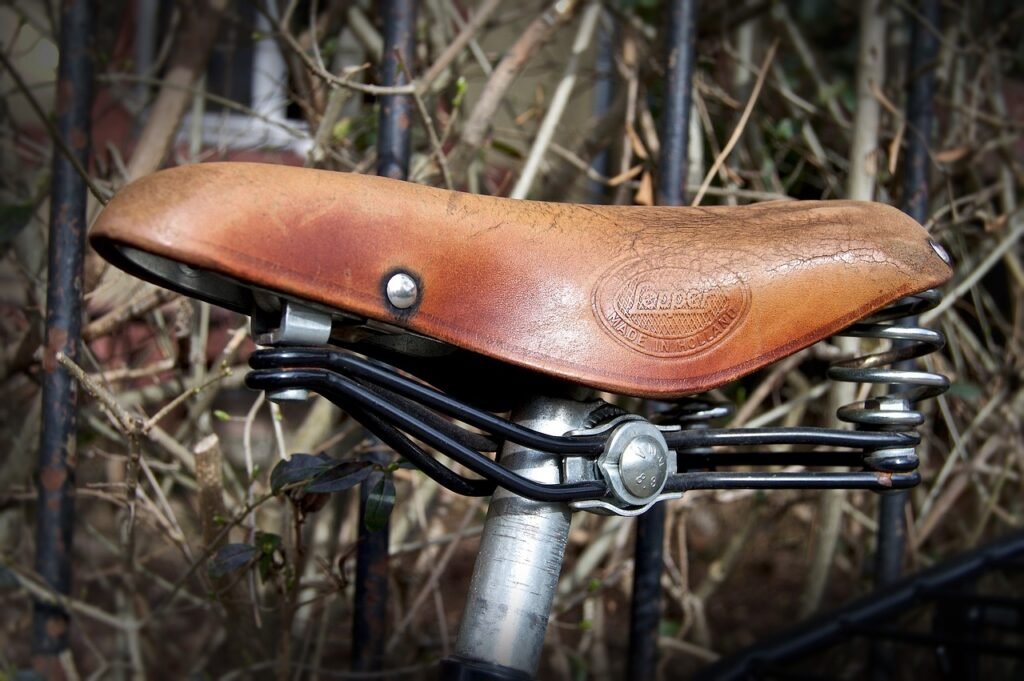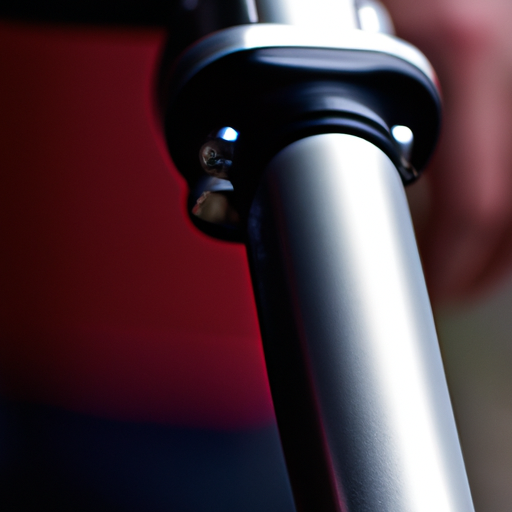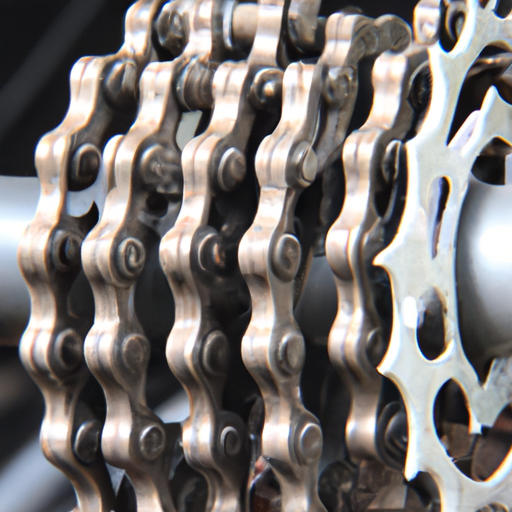How Do I Choose The Right Saddle For My Bike?
Are you struggling to find the perfect saddle for your bike? Choosing the right saddle is essential for a comfortable and enjoyable riding experience. But with so many options available, it can be overwhelming to make the right decision. Don’t worry, we’re here to help! In this article, we’ll guide you through the process of choosing the right saddle for your bike, ensuring that every ride is a breeze. So, let’s get started on finding your perfect match!
1. Understanding the Importance of the Right Saddle
When it comes to cycling, one of the most important factors that can greatly impact your overall comfort and performance is the saddle you choose. The saddle plays a crucial role in supporting your body while riding and ensuring that you can maintain an optimal riding position.
1.1 The role of the saddle in cycling comfort
The primary function of a saddle is to provide a comfortable and stable platform for you to sit on while cycling. A well-designed saddle can help distribute your weight evenly, reducing the pressure on sensitive areas and preventing discomfort or pain during long rides. It also allows you to maintain a balanced position, enhancing your control over the bike.
1.2 Impact of an ill-fitting saddle on your body
Choosing the wrong saddle can have a significant impact on your body. An ill-fitting saddle can lead to discomfort, numbness, and even pain in your lower back, hips, groin, or knees. It can also cause chafing, saddle sores, and other skin irritations, making your cycling experience less enjoyable.
1.3 Overall influence of the saddle on performance
The saddle you ride on can greatly influence your cycling performance. A saddle that fits you properly and supports your body in the correct riding position can improve power transfer, allowing you to pedal more efficiently. It can also enhance your aerodynamics and stability, especially during high-speed descents or challenging terrains.
2. Factors to Consider When Choosing a Saddle
To choose the right saddle for your bike, there are several important factors that you should take into consideration:
2.1 Riding style and discipline
Your riding style and the type of cycling discipline you engage in play a significant role in determining the type of saddle that will suit you best. Different disciplines, such as road biking, mountain biking, commuting, or triathlon, may require specific saddle designs to accommodate the unique demands of each discipline.
2.2 Body type and anatomical differences
No two bodies are exactly alike, which is why it is essential to consider your body type and anatomical differences when selecting a saddle. Factors such as pelvic width, sit bone spacing, and flexibility can greatly influence the type of saddle that will provide you with optimal comfort and support.
2.3 Saddle width and flexibility
The width of the saddle is a critical factor in determining how well it fits your body. Most saddles come in various widths, allowing you to choose one that matches the width of your sit bones. Additionally, considering your flexibility is important, as it affects how you sit on the saddle and the shape that will best accommodate your riding position.
2.4 Padding and cushioning materials
Padding and cushioning materials can greatly impact the level of comfort provided by a saddle. Different materials provide varying degrees of support and shock absorption. It is essential to find the right balance between cushioning and firmness based on your personal preferences and the duration of your rides.
2.5 Cutouts or pressure relief channels
Some saddles come with cutouts or pressure relief channels in the middle. These features are designed to reduce pressure on sensitive areas and improve blood flow, greatly enhancing comfort, especially during longer rides. Consider whether these features are important for you and your specific riding needs.
2.6 Rails and suspension systems
The rails of a saddle connect it to the seatpost and can significantly impact the overall comfort and stability. Different saddle rails offer varying degrees of flexibility, weight, and durability. Furthermore, some saddles come with suspension systems that can absorb road vibrations and shocks, providing an extra layer of comfort.

3. Determining the Correct Saddle Width
Choosing the correct saddle width is crucial for ensuring proper weight distribution and preventing discomfort.
3.1 Importance of saddle width for weight distribution
The width of the saddle directly affects how your weight is distributed while cycling. A saddle that is too narrow can cause excessive pressure on your sit bones, resulting in pain or numbness. On the other hand, a saddle that is too wide can cause friction and chafing on the inner thighs. It is essential to find the right balance that allows your sit bones to rest comfortably on the saddle.
3.2 Measuring sit bone width
To determine the correct saddle width, it is recommended to measure your sit bone width. Sit bones, also known as the ischial tuberosities, are the bony prominences you can feel when sitting on a hard surface. You can either measure your sit bone width at home using specialized tools or visit a bike shop where professionals can assist you in measuring this important metric.
3.3 Choosing the appropriate saddle width based on sit bone measurement
Once you have measured your sit bone width, you can choose a saddle with a width that matches or slightly exceeds your measurement. The goal is to ensure that your sit bones are fully supported by the saddle, allowing for even weight distribution and reducing the risk of discomfort or pain.
4. Analyzing Riding Position and Flexibility
Understanding your riding position and level of flexibility is crucial for selecting the right saddle shape that will accommodate your needs.
4.1 Understanding the different riding positions
Different cycling disciplines and even individual preferences can lead to variations in riding positions. Common riding positions include an upright position for commuting and touring, a forward-leaning position for road biking, and a more aggressive position for mountain biking. Identifying your riding position will help you choose a suitable saddle shape.
4.2 Evaluating your level of flexibility
Flexibility plays an integral role in determining how you sit on the bike and the amount of pelvic rotation you have. Assessing your level of flexibility, particularly in your lower back and hamstrings, can give you insight into the saddle shapes that will best accommodate your specific needs and provide the highest level of comfort.
4.3 Selecting a suitable saddle shape based on riding position and flexibility
Once you have determined your riding position and evaluated your flexibility, you can choose a saddle shape that complements both factors. Saddles come in different shapes, ranging from flat and wide to curved and narrow. Finding a suitable saddle shape will help ensure that you maintain a balanced and comfortable riding position.

5. Assessing Padding and Cushioning
The amount and type of padding or cushioning in a saddle can greatly impact your riding experience and comfort.
5.1 Different types of padding materials
Saddle padding can be made from various materials, including foam, gel, or a combination of both. Each material has its advantages and disadvantages. Foam offers excellent support and can adapt to your body shape over time, while gel provides superior shock absorption. It is important to consider your personal preferences and the level of cushioning you require.
5.2 Finding the right balance between comfort and support
When it comes to padding, it is crucial to find the right balance between comfort and support. While excessive cushioning may feel comfortable initially, it can lead to discomfort and pressure points over longer rides. Opting for a saddle with sufficient padding to absorb road vibrations while still providing firm support can help strike this balance.
5.3 Considering the duration and intensity of rides for padding selection
The duration and intensity of your rides should also influence your choice of padding. For shorter, more intense rides, a saddle with firmer padding may be more suitable for maintaining stability and power transfer. On the other hand, longer rides may benefit from slightly more cushioning to reduce fatigue and improve overall comfort.
6. Understanding Cutouts and Pressure Relief Channels
Cutouts and pressure relief channels are features found on some saddles that are designed to reduce pressure on sensitive areas and improve blood flow.
6.1 Purpose of cutouts and channels
Cutouts and pressure relief channels are strategically placed openings or grooves found in the middle of the saddle. Their primary purpose is to alleviate pressure on the perineal area, which can reduce the risk of numbness, pain, and discomfort, especially during longer rides. These features allow for improved ventilation and can enhance overall comfort.
6.2 Benefits and potential drawbacks of cutouts and channels
The benefits of cutouts and pressure relief channels are clear, as they can significantly reduce discomfort and enhance blood flow. However, it is important to note that these features may not be suitable for everyone. Some riders may find that cutouts or channels result in an increase in pressure on other areas or create undesirable pressure points. It is crucial to test these features and assess their impact on your comfort before making a final decision.

7. Considering Rails and Suspension Systems
The rails and suspension systems of a saddle play important roles in providing support and absorbing road vibrations.
7.1 Types of saddle rails and their characteristics
Saddle rails are the structures that connect the saddle to the seatpost. They can be made from various materials, such as steel, titanium, or carbon fiber. Each material offers different characteristics, including varying degrees of flexibility, weight, and durability. Consider your riding style, body weight, and personal preferences when selecting the type of rails that will best suit your needs.
7.2 Pros and cons of suspension systems
Some saddles come equipped with suspension systems that can further enhance ride comfort by absorbing road vibrations and shocks. Suspension systems can be in the form of elastomer inserts, coil springs, or other mechanisms. While suspension systems can provide additional comfort, they may also add weight and potentially affect power transfer. Consider the trade-offs and evaluate whether a suspension system is necessary for your specific riding conditions.
8. Choosing the Right Saddle for Different Riding Disciplines
Different riding disciplines require specific saddle designs to cater to the unique demands of each discipline.
8.1 Road biking
Road biking saddles typically have a narrower profile to accommodate the forward-leaning position commonly adopted by road cyclists. They often feature minimal padding to promote power transfer and reduce weight. Road biking saddles also tend to have a longer nose to provide additional support during climbs or when riding in the drops.
8.2 Mountain biking
Mountain biking saddles are generally wider and shorter to provide more support and stability in rough terrains. They often have more padding to absorb shocks and vibrations. Additionally, mountain biking saddles may feature reinforced or abrasion-resistant materials to withstand the rigors of off-road riding.
8.3 Commuting and touring
For commuting and touring, comfort and durability are key considerations. Saddles designed for these purposes often have a wider profile, ample padding, and a more upright riding position. They prioritize comfort and support during longer rides and provide a stable platform for carrying additional weight on the bike.
8.4 Triathlon and time trial
Triathlon and time trial saddles tend to have a unique shape with a shorter nose and wider rear section to accommodate an aggressive aerodynamic position. They are designed to optimize airflow and minimize wind resistance while still providing sufficient support and comfort during high-intensity efforts.
9. Seeking Professional Guidance
When in doubt or overwhelmed by the myriad of choices available, it is always a good idea to seek professional guidance.
9.1 Consulting with bike fitting experts
Bike fitting experts can provide valuable insights and guidance in selecting the right saddle for your body type, riding style, and specific needs. They can assess your physical characteristics, measure your sit bone width accurately, and recommend suitable saddles that will optimize your comfort and performance.
9.2 Utilizing saddle pressure mapping systems
Some bike shops use saddle pressure mapping systems that can help pinpoint areas of high pressure and potential discomfort. These systems use specialized pads or sensors to measure pressure distribution while sitting on the saddle. The data collected can assist in identifying the best saddle options that will minimize pressure points and ensure a more comfortable ride.
10. Trying Out and Adjusting the Saddle
Once you have selected a saddle that meets your requirements, it is crucial to try it out and make any necessary adjustments as you become accustomed to it.
10.1 Testing saddle comfort before purchasing
Before purchasing a saddle, it is highly recommended to test its comfort. Many bike shops offer demo saddles or have a policy that allows you to return or exchange saddles within a certain period. Take advantage of this to ensure that the saddle feels comfortable and supportive during short test rides.
10.2 Fine-tuning saddle position and angle
Once you have installed your saddle, it is important to fine-tune its position and angle. Small adjustments, such as saddle height, fore-aft position, and tilt angle, can make a significant difference in your comfort and riding efficiency. Experiment with these adjustments and consult with a bike fitting professional if needed.
10.3 Evaluating comfort during initial rides
During the first few rides with your new saddle, pay close attention to your comfort levels. It is normal for your body to take some time to adjust to a new saddle, but persistent discomfort or pain may indicate that further adjustments or a different saddle are necessary.
10.4 Making necessary adjustments as you become accustomed to the saddle
As you spend more time riding with your new saddle, you may find that additional adjustments are required. Your body will adapt to the saddle gradually, and you may need to fine-tune its position or angle to achieve optimal comfort and performance. Be open to making necessary changes and consult with experts if problems persist.
Choosing the right saddle for your bike is a highly individual process that requires consideration of various factors. By understanding the importance of the right saddle, evaluating your unique needs, and seeking professional guidance when needed, you can ensure that your cycling experience is comfortable, enjoyable, and supportive. Remember, finding the perfect saddle may take some time and experimentation, but the rewards of a comfortable ride are well worth the effort. Happy cycling!





